We use cookies to make your experience better. To comply with the new e-Privacy directive, we need to ask for your consent to set the cookies. Learn more.
CHIP Code Sheet
This CHIP Code Sheet summarises the pictograms, safety phrases and risk phrases which are required by EU laws to be displayed on, or along with, cleaning chemicals.
The safety phrases and risk phrases can be found on Safety Data Sheets (SDS) and Material Safety Data Sheets (MSDS), which we can provide you with if required.
Please ensure you request MSDS/SDS Safety sheets when you purchase chemical products off our website.
Pictograms
The hazard labels on cleaning products consist of warnings and specific symbols known as pictograms. The European's Union 2009 classification, labeling and packaging (CLP) regulation introduced new pictogram designs to the labeling system for hazardous chemicals. New pictograms including Gas Under Pressure and Serious Health Hazard, were introduced in 2017. The diamond shaped thumbnail diagrams indicate the nature of the hazard(s) associated with the use of a hazardous substance. On the cleaning product labels, the pictograms are accompanied by signal words, hazard statements, and precautionary statements, as well as supplier and product information.
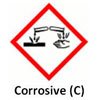
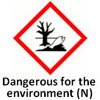
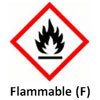
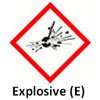
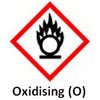
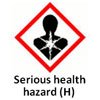
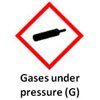
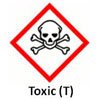
Safety Phrases
Safety phrases give advice to ensure safe use of cleaning chemicals.
| S1: Keep locked up | S2: Contact with combustible material may cause fire |
| S3: Keep in a cool place | S6: See label for details of inert gas and storage |
| S7: Keep container tightly closed | S9: Keep container in a well ventilated place |
| S13: Keep away from food, drink and animal feeds | S14: Keep away from... (see product label) |
| S16: Keep away from sources of ignition | S17: Keep away from combustable material |
| S18: Handle & open container with care | S20: When using, do not eat, drink or smoke |
| S21: When using, do not smoke | S22: Do not breathe dust |
| S23: Do not breathe gas / fumes / vapour / spray | S24: Avoid contact with the skin |
| S25: Avoid contact with eyes | S26: In case of contact with eyes, rinse immediately and seek medical advice |
| S27: Remove all contaminated clothing immediately | S28: Special requirements for removing off skin (see product label) |
| S29: Do not empty down the drain | S33: Take precautionary measures against static discharges |
| S35: This material and its container must be disposed of in a safe way | S36: Wear suitable protective clothing |
| S37: Wear suitable gloves | S38: In case of insufficient ventilation, wear suitable respiratory equipment |
| S39: Wear eye / face protection | S41: In case of fire and/or explosion, do not breathe fumes |
| S42: During fumigation / spraying, wear suitable respiratory equipment (see product label) | S43: Special firefighting requirement (see product label) |
| S45: In case or accident, or if you feel unwell, seek medical advice immediately | S46: If swallowed, seek medical advice immediately & show container / label |
| S47: Specific storage temperature requirement (see label for detail) | S50: Not to be mixed with other substances (see product label for detail) |
| S51: Use only in well ventilated areas | S53: Avoid exposure - obtain special instructions before use |
| S56: Dispose of this material and its container at special waste collection point | S57: Use appropriate container to avoid environmental contamination |
| S59: Refer to manufacturer / supplier for information on recovery / recycling | S60: This material and its container must be disposed of as hazardous waste |
| S61: Avoid release to the environment | S62: If swallowed DO NOT induce vomiting: seek medical advice immediately and show the container / label |
| S64: If swallowed, rinse mouth with water (only if the person is conscious) |
Risk Phrases
The risk phrases, also known as hazard statements, give more detailed information on the hazard.
| R7: May cause fire | R8: Contact with combustible material may cause fire |
| R10: Flammable | R11: Highly flammable |
| R12: Extremely flammable | R20: Harmful by inhalation |
| R21: Harmful in contact with skin | R22: Harmful if swallowed |
| R31: Contact with acids liberates toxic gas | R34: Causes burns |
| R35: Causes severe burns | R36: Irritating to eyes |
| R37: Irritating to respiratory system | R38: Irritating to skin |
| R40: Possible risk of irreversible effects | R41: Risk of serious damage to eyes |
| R42: May cause sensitization by inhalation | R43: May cause sensitization by skin contact |
| R51: Toxic to aquatic organisms | R52: Harmful to aquatic organisms |
| R53: May cause long-term adverse effects in the aquatic environment | R65: Harmful: may cause lung damage if swallowed |
| R66: Repeated exposure may cause skin dryness or cracking | R67: Vapours may cause drowsiness and dizziness |
